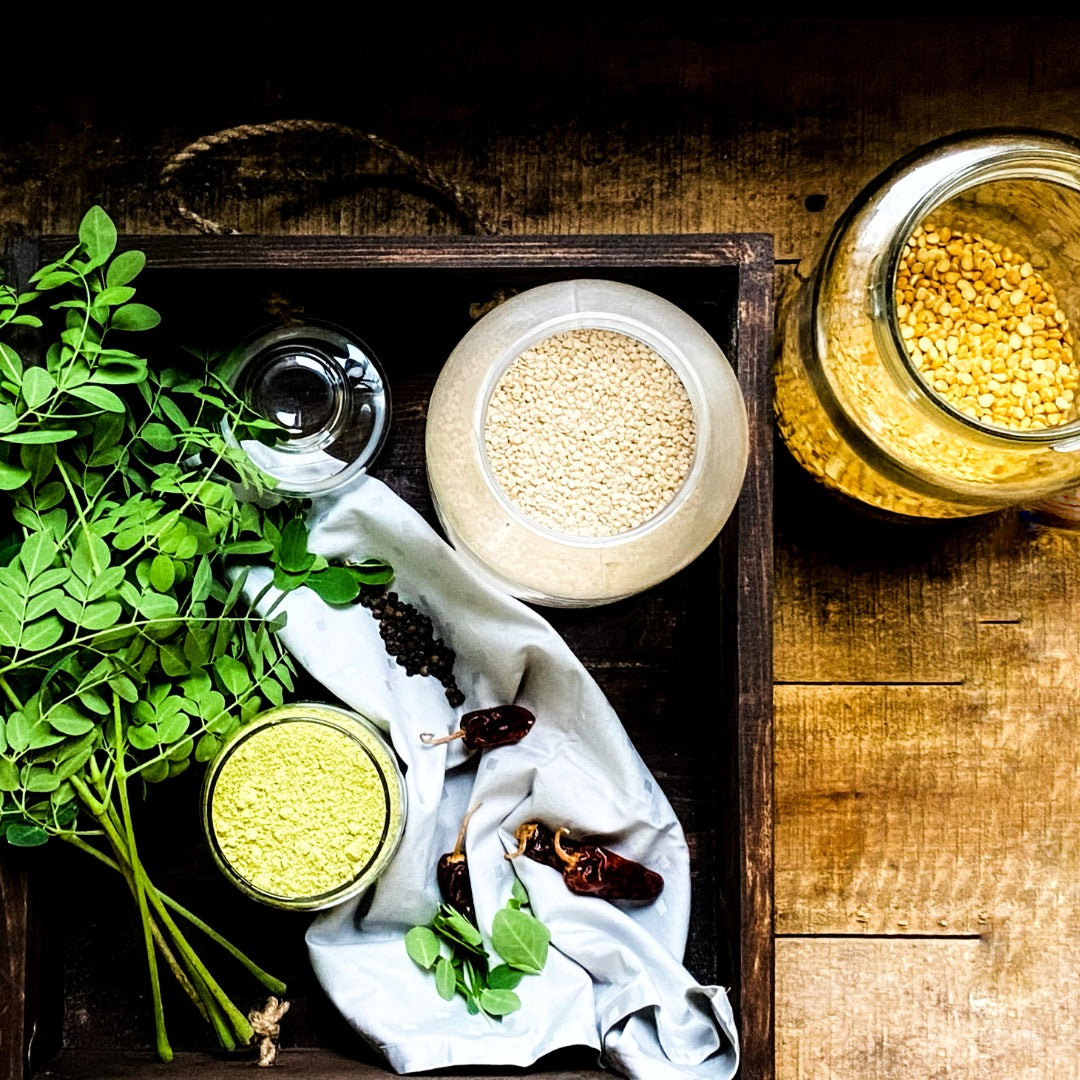written by - Shanthini Rajkumar
As far as ghee ‘diaries’ go, the Indian pediatrician’s advice seems to have come full circle and stands in complete agreement with ancient practices. It does get tweaked a bit here and there with them suggesting that ghee be added to oats porridge etc but other than that the message is clear. Native ghee is an essential food to be included when weaning an infant.
Without having to do too much research or go into a deep fact based theory, let us first simply just look at the different foods which are common in each Indian household across the country.
A simple but nutritious meal usually consists of a rice or wheat staple and ghee. Roti, ghee & jaggery is a time tested combination of adding solids to a toddler’s diet. Ancient wheat grains are easily digested when paired with ghee which helps in the absorption of the vitamins in the food. Jaggery made by a slow caramelization of sugarcane juice or palm tree nectar is rich in minerals. This meal provides a nutritious balance and yet does not tax the young digestive system.
A toddler requires foods which provide adequate energy for growth as well as increase in mobility and movement. The limbs need to gain strength by constantly practicing standing and walking and this is possible only through a native diet.

Vedic ghee made using the bilona method from the milk of desi cows is rich in A2 beta casein, the ideal protein for growing minds and bodies. Ghee, rice and powdered rock salt are an equally ancient Indian combination. Small balls of this mixture are made and a piece of vegetable is tucked in to add colour and interest. The rice balls are small enough for the baby to pick up after 8 months of age when the fine motor skills come into play.
A few decades ago it was considered harmful (by doctors) to give babies ghee lest it leads to obesity from a young age. It didn’t matter that the elders in the family would pooh pooh at this logic, it was what was recommended by the learned person in the white coat and so it shall be.
When the West began to fully embrace desi ghee as a super food and began to talk of having a spoonful to start the day, it was time for our native lot to sit up and lend a ear.
And just like that, quietly, without much fanfare or admissions ,the ghee was prescribed back into the diet. Weaning foods are necessary for the baby to get used to eating different tastes and textures other than breast milk. It starts with soft, easy to digest foods while still paying attention to the milk intake.

Along with rice, the water from the cooked lentils is added with a teeny grain of natural salt and a few drops of ghee. The ghee (desi) also cleanses and is an appetite stimulant. Ghee possesses powerful antioxidant properties which will help build up the immature immune system in babies and toddlers. This will further help to ward off infections and viruses.
Babies apparently tend to have an inbuilt affinity towards the taste of ghee. The right fats in a growing toddler’s diet will help keep the skin glowing and soft and at the same time will not lead to unnecessary weight gain .
Simple foods which do not offer too much variety keeps the digestive system in proper working order. Exposing babies and toddlers to fancy foods will cause unnecessary strain and make the digestive system sluggish. Having too much to choose from is also overwhelming for a baby or toddler’s senses. It will leave them confused, overwhelmed and not in the right frame of mind to eat a proper meal.

Some of the other simple but tasty options are idli with ghee and a watery lentil gravy, native bananas mashed with a few drops of ghee, uppma with a tempering of ghee or even a soft dosa made with ghee. These are all delicious comforting meal options for babies and toddlers….So delicious in fact, that it’s not common for the adults to also want a few bites of the same.
The quantity of ghee per day can vary between a quarter tsp to about 2-3 tsp per day depending on the age of the child. An infant after 7 months can be given ¼ tsp of ghee .
Perhaps the most important development in a baby is ascertained by the way they interact or connect with others. Babies respond to stimuli by way of being spoken to, hearing lullabies or by showing physical affection. Cuddling, massaging and rocking are all ways to awaken the neurocentres of the brain.

Ghee too is vital for the development of intellect, memory and learning. Ghee is an important agent for detoxification and improves the health of the brain and thereby all endocrine functions. It also promotes heart health and circulation.
Understanding native foods and their health benefits is just the beginning. We need to delve further into sourcing the same and understanding the quantity which is best suited for health and well-being. After all, too much of anything also serves no purpose !
https://www.beingtheparent.com/benefits-of-ghee-for-baby/
https://healthyayurveda.com/improving-brain-function-with-ayurveda-benefits-of-ghee-brain-boosting-herbs/














